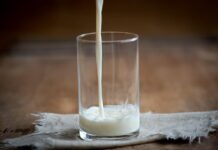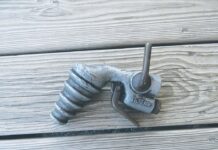Here in northeast Ohio, things seem to have come to a grinding halt, as far as spring is concerned. Brisk conditions have remained constant, and nighttime temps below freezing have resulted in frozen water troughs every morning. Sadly, these weather conditions have halted the emergence of our spring wildflowers, which rely upon the early rays of sunshine to warm the soil. Sunshine? What sunshine?
In last week’s column, I highlighted a few of the spring ephemerals that were in bloom and hoped to follow up this week with a variety of species in the process of making an appearance. I guess you will just have to read this and wait with anticipation.
Read part 1 of “An ephemeral emergence” here before you dive in to part 2
Trillium
Not all states have an official wildflower, but in 1986, Ohio was assigned the large-flowering trillium (Trillium grandiflorum ), a spectacular flower established throughout all the state’s 88 counties. Honestly, I can’t think of a wildflower more grandiose to represent this state. The largest of the trillium species, it stands up to an impressive 20 inches tall with an imposing white waxy blossom often measuring three inches across. The “tri” in trillium stands for three, which is represented in its three petals, three sepals and three whorled leaves, commonly resulting in the name, trinity flower. As the flowers fade, the petals turn pink as they begin to shrivel, resembling another fairly common trillium species here in northeast Ohio, the red trillium (Trillium erectum). In all, the state is home to eight native species of trillium.
Trilliums favor rich woodlands, and different species can grow in association with each other, impressively carpeting an entire wooded landscape. The plants are long-lived. Trilliums are unable to produce a blossom until they are around 10 years old and live for decades. It literally takes many decades for trilliums to form a blossoming carpet across the forest floor. Sadly, white-tailed deer are taking their toll on trilliums, as they are a highly sought spring treat. When the plant is in flower, all its energy is above ground, so being browsed by a deer or picked by a human, often spells death for the plant that has taken so long to reach sexual maturity.
Marsh marigold

If you live near an area with waterlogged soil, you might be lucky enough to behold a breathtaking display of colonial marsh marigolds (Caltha palustris). Also known as cowslip or kingcup, the plant is at home in ditches, marshes, fens, swamps and wet woodlands without too much standing water. A member of the buttercup family, marsh marigolds have robust, shiny yellow blossoms that occur in clusters atop hollow, succulent stems. The flowers, nearly 1 ½ inches across, have up to nine petals infused with lines of ultraviolet pigment visible only to certain insects, especially effective at luring native bees and hoverflies. The plant’s shiny leaves come in a variety of configurations, including oval, heart, round or kidney-shaped. In Ohio, marsh marigolds most commonly occur in glaciated regions.
Marsh marigold plants contain a yellow oil known as protoanemonin, which can cause irritation if handled. It can also cause livestock to become sick if consumed, though thankfully, dried plants found in hay no longer contain toxins. Because of the damp habitats in which they grow, most marsh marigolds are safely admired from a distance.
Lookalikes

Two spring ephemerals that are similar in appearance and commonly confused are squirrel corn (Dicentra canadensis) and Dutchman’s’ breeches (Dicentra cucullaria). With their lacy leaves and multiple flowers that hang suspended from a common stem, you may recognize their resemblance to the old-fashioned garden variety of bleeding hearts, of which they belong to the same genus. The flowers of both species have petals that form long spurs that harbor the plant’s nectar. Yet that is where the similarities end.
If I had to choose a favorite, I would have to lean toward Dutchman’s breeches. The delicate white flowers appear as a row of little pantaloons hanging on a wash line, each with a yellow “waistband” at the base. The plant’s lacy leaves are a tad bit broader and more of a blue-green in color than those of squirrel corn, but unless you see the two species side by side, it’s almost impossible to make a call. Although I often see both species blooming side by side, Dutchman’s breeches often get the jump on their counterpart, blooming a week or so earlier.

Squirrel corn flowers, although similar, lack the yellow waistband of the Dutchman’s breeches and appear almost heart-shaped with delicate tinges of pink. Interestingly, the plant’s name is derived from the underground storage structures, known as corms or tubers, which resemble orange kernels of corn. The roots of Dutchman’s breeches, on the other hand, break the surface of the soil as pink bulblike structures.
The flowers of both species are perfectly adapted for pollination by bumblebees. Unlike a honeybee, whose tongue is short, the bumble bee’s tongue is the perfect length for reaching up into the long spurs of the blossoms and extracting the pollen from deep within. While doing so, the bumble bee picks up pollen on its abdomen, which is then carried to other like flowers, achieving pollination. It is a perfect partnership.
There is a wooded ravine in one of our local parks, far from any trail, which I visit every spring, the floor of which is carpeted with these two similar species of spring ephemerals. In fact, I have mentally mapped out some of the most pristine locations where wildflowers flourish in my area and make a point of visiting them each spring. It has become one of my most coveted rituals. You should try it too. But don’t blink as it will all be over for another year once those leaves emerge on the trees!












Absolutely LOVE this column.
thanks for sharing your knowledge .great stuff
look forward to all your articles